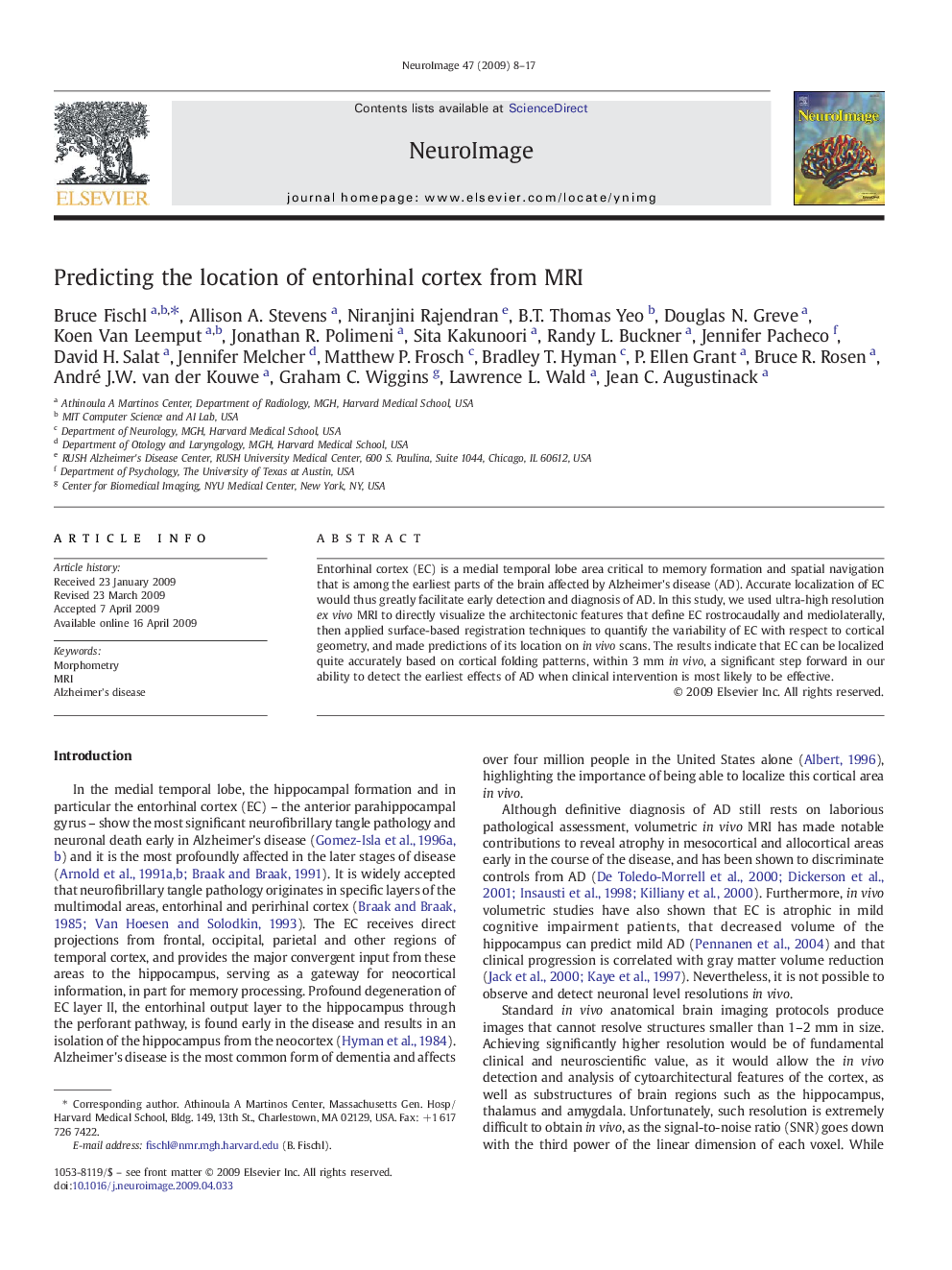| Article ID | Journal | Published Year | Pages | File Type |
|---|---|---|---|---|
| 6036788 | NeuroImage | 2009 | 10 Pages |
Abstract
Entorhinal cortex (EC) is a medial temporal lobe area critical to memory formation and spatial navigation that is among the earliest parts of the brain affected by Alzheimer's disease (AD). Accurate localization of EC would thus greatly facilitate early detection and diagnosis of AD. In this study, we used ultra-high resolution ex vivo MRI to directly visualize the architectonic features that define EC rostrocaudally and mediolaterally, then applied surface-based registration techniques to quantify the variability of EC with respect to cortical geometry, and made predictions of its location on in vivo scans. The results indicate that EC can be localized quite accurately based on cortical folding patterns, within 3Â mm in vivo, a significant step forward in our ability to detect the earliest effects of AD when clinical intervention is most likely to be effective.
Keywords
Related Topics
Life Sciences
Neuroscience
Cognitive Neuroscience
Authors
Bruce Fischl, Allison A. Stevens, Niranjini Rajendran, B.T. Thomas Yeo, Douglas N. Greve, Koen Van Leemput, Jonathan R. Polimeni, Sita Kakunoori, Randy L. Buckner, Jennifer Pacheco, David H. Salat, Jennifer Melcher, Matthew P. Frosch, Bradley T. Hyman,
